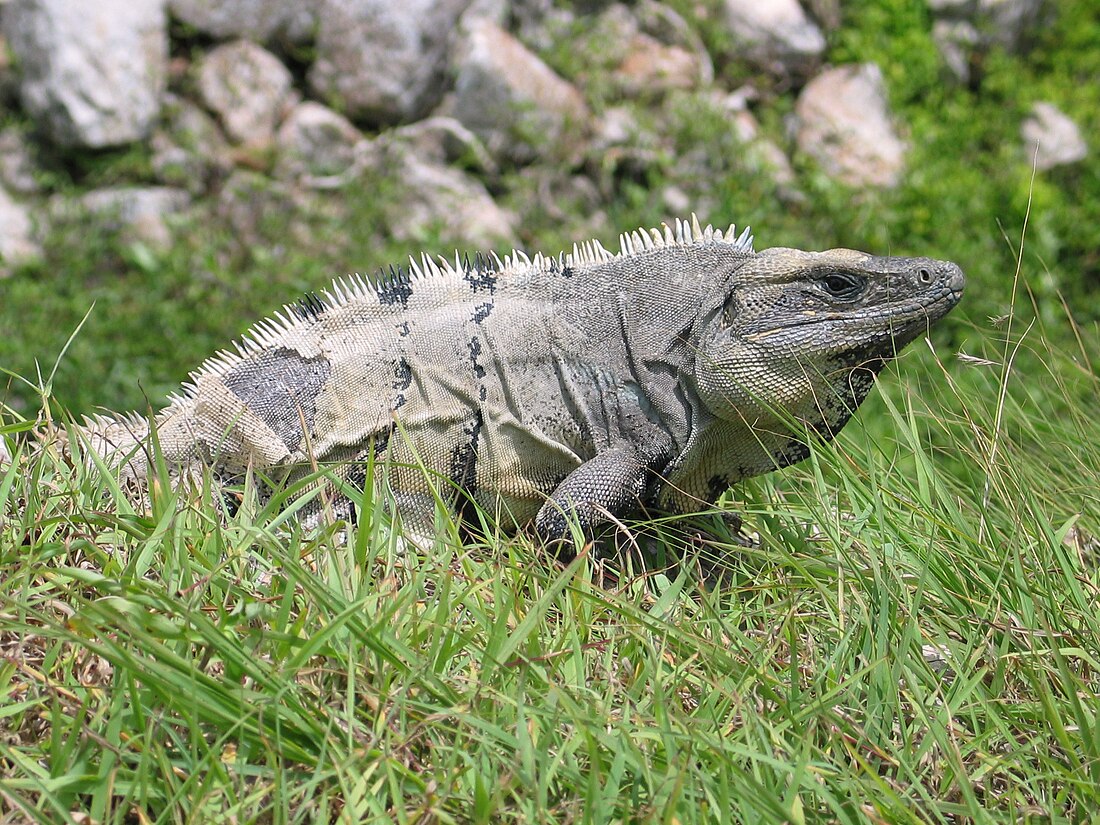Top Qs
Timeline
Chat
Perspective
Ctenosaura
Genus of lizards From Wikipedia, the free encyclopedia
Remove ads
Ctenosaura is a lizard genus commonly known as spinytail iguanas or ctenosaurs. The genus is part of the large lizard family Iguanidae and is native to Mexico and Central America. The name is derived from two Greek words: κτενός (ctenos), meaning "comb" (referring to the comblike spines on the lizard's back and tail), and σαύρα (saura), meaning "lizard".[citation needed]

Remove ads
Description
The species range in size (total length, including the tail) from about 12.5 centimetres (4.9 in) to well over 1 metre (39 in). The distinctive feature of this genus is the presence of enlarged, spiny scales on the tail.
Ecology and natural history
Ctenosaurs are generally omnivorous, feeding on fruits, flowers, foliage, and small animals.
While studying physiological correlates of locomotion in lizards, a "burst speed" of 34.6 km/h (21.5 miles/h) was recorded by a black spiny-tail iguana (Ctenosaura similis), which is the highest speed reported for a lizard.[1]: p.812 [2]
Captivity
C. pectinata, C. similis, and C. quinquecarinata are popular as pets.
Invasive species
At least two species, Ctenosaura pectinata and Ctenosaura similis, have been introduced into southern areas of Texas and Florida.[3] They are also now [when?] in southern Arizona[citation needed].
Species
Summarize
Perspective
The genus Ctenosaura represents the most diverse group of iguanas with 15 currently recognized species and at least two unrecognized species.[4][5] These species inhabit lowland dry forests, woodlands and semi-open habitats, below 1,200 metres (3,900 ft) elevation, on both coasts of Mexico and Central America.[4] The species in the genus Ctenosaura belong in several different clades.[4] Closely related species show allopatry whereas species from divergent clades show sympatry.[4] Until 2017, the two species of Cachryx were included in Ctenosaura.[6]
Remove ads
References
Further reading
External links
Wikiwand - on
Seamless Wikipedia browsing. On steroids.
Remove ads













